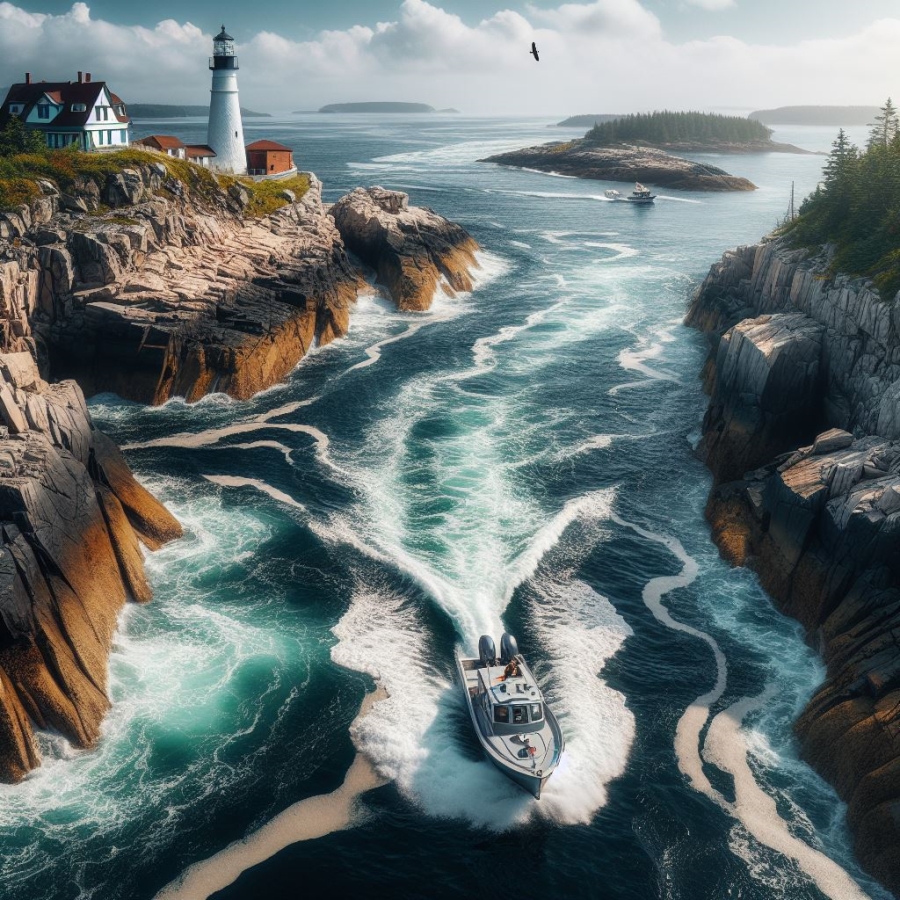Venturing into the open waters can be as breathtaking as it is perilous, especially when navigating through some of the most dangerous inlets in the U.S.
As you steer your boat closer to these narrow waterways, your heart might pound louder than the crashing waves. These inlets, notorious for their treacherous conditions, can test the skills of even the most experienced mariners.
Among these aquatic hazards, places like the Golden Gate Strait in California and Oregon Inlet in North Carolina are famed not just for their stunning views but also for the challenges they present.
Strong currents, unpredictable weather, and even shifting underwater topography come together to create a perfect storm that could imperil any vessel trying to pass through.
Whether you are an adrenaline-seeking sailor or a cautious cruiser, knowing where these daunting inlets lie along America’s vast coastline can be lifesaving.
8 of the Most Dangerous Inlets In the US.
- Oregon Inlet in North Carolina: famous for unpredictable conditions.
- St. Lucie Inlet in Florida: a narrow passage where boaters face daunting challenges.
- Ponce Inlet, also in Florida, presents similar dangers with its shifting sands and swift currents.
- Jupiter Inlet adds to Florida’s reputation for tricky navigational spots.
- Hatteras Inlet Hatteras Inlet, like Oregon Inlet, is another challenging spot on the North Carolina coast, with its own set of dangers due to shifting sands and strong currents.
- Barnegat Inlet Barnegat Inlet in New Jersey is also known for its treacherous waters; though it is not specifically mentioned in the provided search results, it’s well-known among boaters for its strong currents and shifting sands.
- Columbia River Bar The Columbia River Bar is known as the “Graveyard of the Pacific” for its perilous conditions, with treacherous waves and strong currents at the river’s mouth on the Oregon-Washington border.
- And let’s not forget California’s Golden Gate Strait, with its own notorious repute.
1. Oregon Inlet
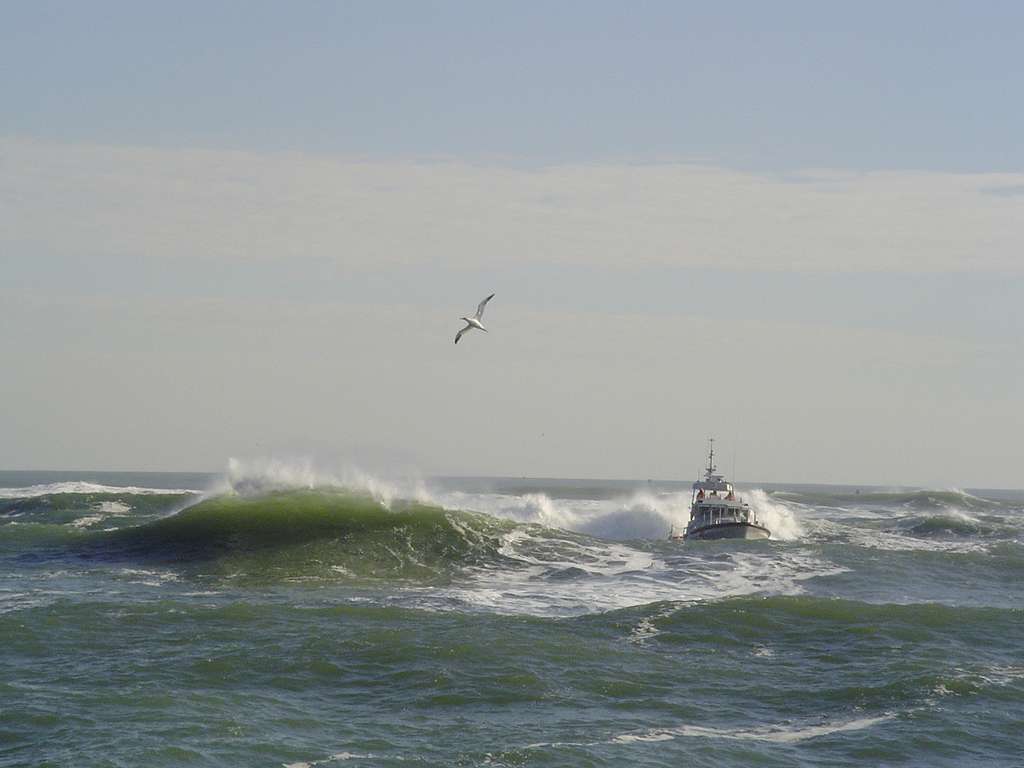
Oregon Inlet, North Carolina: Oregon Inlet is notorious for its rapidly shifting sandbars and powerful currents. It’s a dynamic waterway that can change depth drastically, making navigation unpredictable. This inlet is heavily used by both commercial and recreational vessels, adding to its reputation for being dangerous.
2. Jupiter Inlet
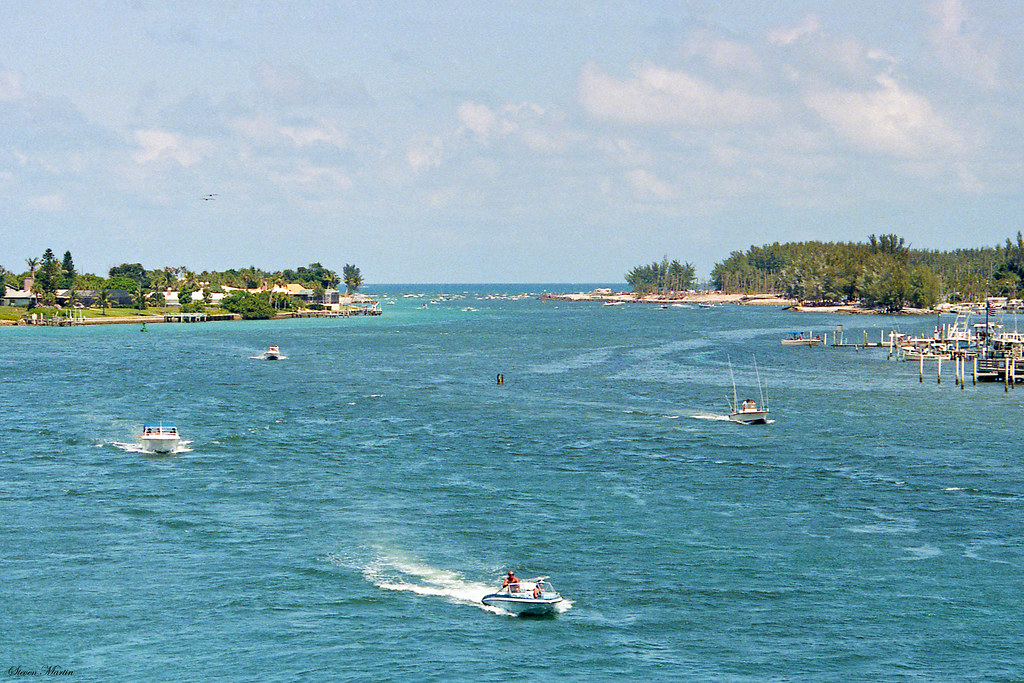
Jupiter Inlet, Florida: Jupiter Inlet is known for its narrow and shallow waters, coupled with strong currents that can create hazardous conditions for boaters. It is particularly dangerous during outgoing tides when the current runs against the waves, creating large, unpredictable surf.
3. Ponce Inlet
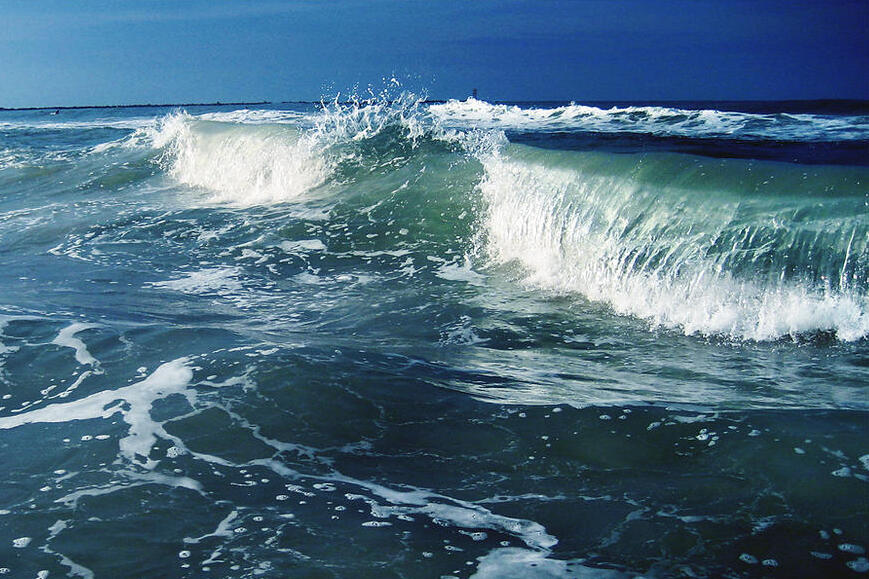
Ponce Inlet, Florida: Not mentioned in the search results, but Ponce Inlet is another inlet known for its challenging conditions. It has a history of rough waters and has been the site of numerous boating accidents.
4. Golden Gate

Golden Gate Strait, California: While not an inlet in the traditional sense, the Golden Gate Strait, which is the entrance to San Francisco Bay from the Pacific Ocean, can be treacherous due to its strong tides, currents, and frequent fog. It requires careful navigation.
5. Hatteras Inlet
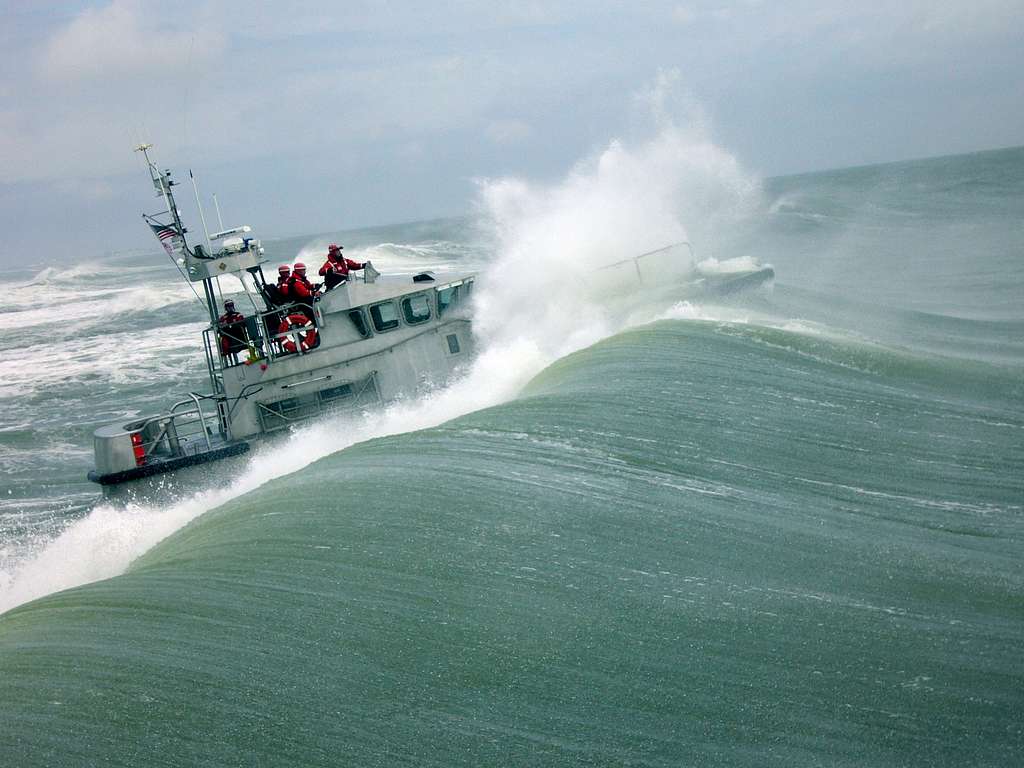
Hatteras Inlet, North Carolina: Similar to Oregon Inlet, Hatteras Inlet is also located on the Outer Banks of North Carolina. It can be particularly treacherous due to its shifting channels and is known for being a challenge even for experienced mariners.
6. ST Lucie Inlet

St. Lucie Inlet, Florida: This inlet is known for its narrow channel and shifting sandbars that can create hazardous conditions for boaters. It requires constant maintenance dredging to keep it navigable, which underscores its challenging nature.
7. Barnegat Inlet
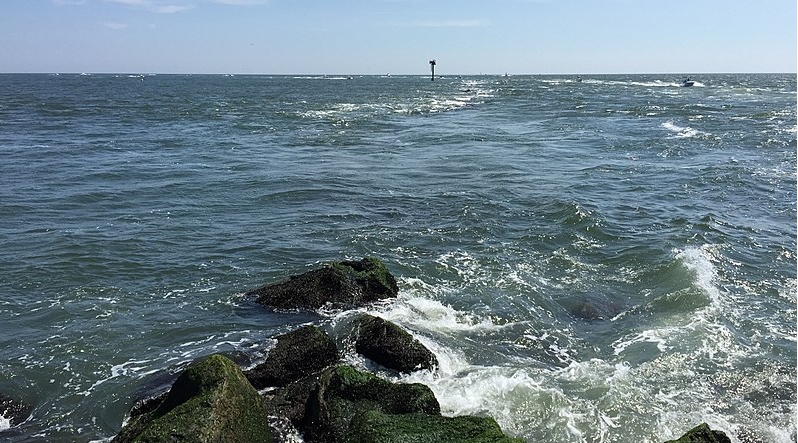
Barnegat inlet, located in Ocean County, New Jersey, is another inlet known for its potentially dangerous conditions. It serves as a connection between the Barnegat Bay and the Atlantic Ocean. The inlet is characterized by strong currents and shifting sandbars, which can make navigation tricky. Historically, it has been considered one of the most treacherous inlets along the New Jersey coast. Mariners need to exercise caution when navigating Barnegat Inlet, especially during rough weather conditions or strong tidal changes.
8. Columbia River Bar

Columbia River Bar is not an inlet but rather a system of bars and shoals located at the mouth of the Columbia River, where it meets the Pacific Ocean, spanning the U.S. states of Oregon and Washington. It is known as one of the most dangerous and challenging navigational passages in the world due to the confluence of river and ocean currents, which can create large, unpredictable waves and hazardous conditions for ships. The Columbia River Bar Pilots are specialists in navigating this treacherous area, guiding vessels of all sizes safely across the bar.
Understanding Inlet Dynamics
Navigating inlets can be like dancing with nature’s forces. As you seek adventure in coastal waters, comprehending the dynamics of these treacherous zones is crucial for safety.
Causes of Dangerous Conditions
Inlets are inherently unstable environments. The convergence of ocean swells, and land formations create a narrow passage where water must move more swiftly to get through. This speed-up can cause strong currents, which are notoriously unpredictable, making navigation quite challenging. Factors contributing to this include:
- Wind: Often amplifies wave height and current strength.
- Tidal flows: Inlets may experience extreme changes in water level.
- Topography: Underwater features can redirect and accelerate currents.
Effects of Tides and Currents
The interplay of tidal forces and coastal currents shapes the conditions within an inlet. When the tide rushes in or out, the water within these narrow corridors can turn into a dynamic conveyor belt of energy, producing phenomena such as:
- Standing waves: These stationary waves form in opposing currents.
- Breaking waves: Waves that grow too tall may collapse violently.
Recognizing and respecting the power of these forces is not just smart; it’s essential for anyone looking to navigate these complex waterways.
Geography of High-Risk Inlets
Navigating the United States inlets can be perilous due to a blend of strong currents, shifting sandbars, and complex topographies. Your awareness of the geographic nuances of these high-risk inlets is crucial for safe maritime passage.
East Coast Turbulence
Florida’s treacherous waters are home to inlets like Jupiter Inlet and St. Lucie Inlet, infamous for their narrow passages compounded by shifting sands. Similarly, North Carolina’s Oregon Inlet and Hatteras Inlet pose significant risks. Known for their volatile waters, these Outer Banks inlets have a storied history of navigational challenges.
West Coast Challenges
On the opposite side of the continent, California and the Columbia River Bar present their own dangers. Here, the Pacific Ocean exerts its full force, making passages perilous. The combination of potent tidal swings and a rocky coastline make the West Coast inlets, like those in Northern California, some of the most intimidating for mariners to traverse.
Southern States’ Swells
New Jersey’s Barnegat Inlet, selected for beneficial dredging practices, exemplifies the complex interplay of engineered and natural elements in Atlantic Coast inlets. The Barnegat Inlet, specifically, is known for its fierce currents and is a stark reminder of how dynamic and menacing these waterways can be, especially in areas with heavy commercial and recreational boating traffic.
Navigational Challenges and Solutions
Before venturing into the dynamic environments of inlets, it’s crucial for you to understand the difficulties and measures to ensure safe passage. From maintaining waterways through dredging to employing the latest in marine technology, let’s explore how you can navigate these treacherous waters proficiently.
Dredging: A Controversial Remedy
Dredging, executed by entities like the U.S. Army Corps of Engineers, tackles the problem of shoaling by removing accumulated sediment and maintaining a clear navigation channel. But this solution is not without its complexities, as it often sparks debates regarding its environmental impacts. Nevertheless, frequent dredging at places like Barnegat Inlet ensures safer passageways for boats across the United States.
Boating Safety Near Inlets
You know that safety while boating is paramount, and inlets require extra caution. First, always wear a life jacket—unexpected waves or the notorious roller can cause vessels to broach. Beyond that, understanding the rhythm of boat traffic and the ever-present shifting sands at inlets like Boynton is a must for your recreational outings. Stay vigilant about sandbars and local conditions for a smoother boating experience.
Advanced Marine Electronics
Embrace technology to mitigate risks when running dangerous inlets. With sophisticated marine electronics, you can plot a safe course and stay informed about underwater terrain and boat traffic. This tech can also alert you to shoaling areas and help you steer clear of them. For recreational vessels, investing in good-quality electronics is a proactive step toward boating safety.
Navigating inlets safely is a balance of respect for mother nature’s changing moods and using human ingenuity to overcome these challenges. Enjoy the ride, stay informed, and sail safely.
Environmental and Economic Considerations
Navigating the waters around the United States can be as treacherous as it is awe-inspiring, especially when it comes to inlets. Their management not only affects the environment and its delicate aquatic ecosystems but also has significant economic repercussions on shorelines and local communities. Let’s explore these impacts in more detail.
Environmental Impact of Inlet Management
The way inlets are managed can have profound effects on the local environment. For example, activities like channel maintenance, which involves the removal of sediment to keep waterways navigable, are critical to aquatic ecosystems. The Water Resources Development Act outlines the importance of maintaining these channels while also considering the environmental benefits. When inlets are dredged, the sediment can be beneficially used for beach nourishment, storm damage reduction, and even civic improvement projects that enhance the natural beauty and stability of shorelines.
A forward-thinking approach to inlet management involves innovative uses and placement alternatives for dredged materials, aligning with public safety and environmental stewardship. This may include creating wetlands that bolster aquatic ecosystems and provide additional habitat for wildlife or using the sediment to fortify barrier islands that protect inland areas from severe storms.
Economic Implications of Safe Inlets
Safe inlets are crucial for a thriving economy. Not only do federal navigation channels support commercial shipping, but they also serve as gateways for recreational boating and fishing, which are significant economic drivers along the coast. Regular and sometimes even one-time dredging is not just a matter of keeping the waterways clear; it’s about ensuring future channel maintenance is feasible and sustainable. Economic benefits are not just seen in the short term but also in storm damage reduction, which is a strategic investment toward minimizing the costs associated with severe weather events.
The U.S. Army Corps of Engineers serves as subject matter experts when it comes to the beneficial use of dredged material. Their decisions can help to mitigate potential economic losses due to erosion and facilitate ongoing commerce and tourism. Selections like the Barnegat Inlet highlight the importance of using dredged materials not only to maintain but enhance and protect the coastal environments that so many communities rely upon.
Case Studies and Historical Accounts
In this part of the article, we’ll uncover how inlets like those at the Outer Banks have evolved over time and the profound impact of catastrophic events on maritime protocols.
Outer Banks Inlets Through Time
Spanning North Carolina’s coast, the Outer Banks are famous for their dynamic and treacherous inlets. Imagine you’re a charter captain from the ye olden days, navigating through these shifting sands, the tides and weather contrasting starkly from one voyage to the next. Over centuries, continually changing inlets have reshaped navigation routes, sometimes creating entirely new waterways or closing up others, particularly in areas around Pamlico Sound, angling charters always to stay alert.
Catastrophic Events and Lessons Learned
Historical records note several incidents where the fierce unpredictability of the seas led to maritime tragedies. These events teach hard lessons that have reverberated through time, leading to the establishment of better forecasting methods, safety regulations, and even the construction of more resilient vessels. You can feel the weight of this history when you consider that with each catastrophic event, the collective knowledge on how to improve safeguarding against similar incidents grows – a silver lining for future mariners facing the capricious nature of the sea.
Frequently Asked Questions
Inlets can be both beautiful and menacing, posing various challenges to mariners and beachgoers alike. In this section, let’s dive into some common queries about the factors that make inlets hazardous.
Q: What factors contribute to the danger of Oregon Inlet?
Oregon Inlet is not to be underestimated. Here, powerful currents meet with shifting sands to create conditions that can quickly change and catch even the most experienced mariners off guard.
Q: How does Jupiter Inlet compare to other hazardous inlets?
Jupiter Inlet has a reputation for volatility, with swift tide changes and narrow passages that can be difficult to navigate, making it comparable in risk to some of the most challenging inlets along the coastline.
Q: Can you explain why some inlets, like Haulover, are known for rough waters?
Haulover Inlet’s rough waters are a result of the tidal flow between the Atlantic Ocean and Biscayne Bay, which creates strong currents and potentially large, dangerous waves, especially during changing tides.
Q: What makes inlets on the East Coast particularly treacherous?
The East Coast is home to some particularly dangerous inlets due to its high-traffic waterways, prominent tidal swings, and the frequent occurrence of nor’easters that can drastically alter water conditions.
Q: Which inlet holds the reputation for being the most perilous on the West Coast?
The notorious reputation on the West Coast belongs to the Columbia River Bar, an inlet that challenges navigators with its unpredictable weather, strong currents, and shifting underwater sandbars.
Q: What conditions contribute to the notorious reputation of inlets in Florida?
In Florida, the combination of recreational boating traffic, strong tides, and severe weather events like hurricanes contribute to the perilous nature of inlets, requiring extra caution for anyone on the water.
Final Words!
Navigating the waters along the U.S. coastline can be as thrilling as it is treacherous. You’ve journeyed with us through the twists and turns of the nation’s most hazardous inlets, aware now that currents and conditions can shift like the sandbars beneath the waves.
Remember, knowledge is as vital as a life vest in these areas. Always observe weather patterns and tide schedules and seek insights from local mariners. Stay vigilant and respect the power of the sea, and you’ll not only thrive on the water but also carry with you stories of conquering some of the most formidable aquatic gateways.
Embarking on these waters could be the challenge of a lifetime, offering experiences to behold and tales to tell. Just be sure your seafaring saga doesn’t become a cautionary tale. Keep your wits about you, and let’s keep the adventures coming!
Want More Tips?
Subscribe to Cruising Sea newsletter to receive every two weeks the latest posts straight to your inbox!

Daniella has been passionate about travel, the sea, and nature for many years. As a child, she frequently traveled throughout the Mediterranean and continued with her journeys throughout her adult life.
Her experiences have created the desire within her to share her love for traveling with other passionate and adventurers who want to discover beautiful horizons and new cultures.

